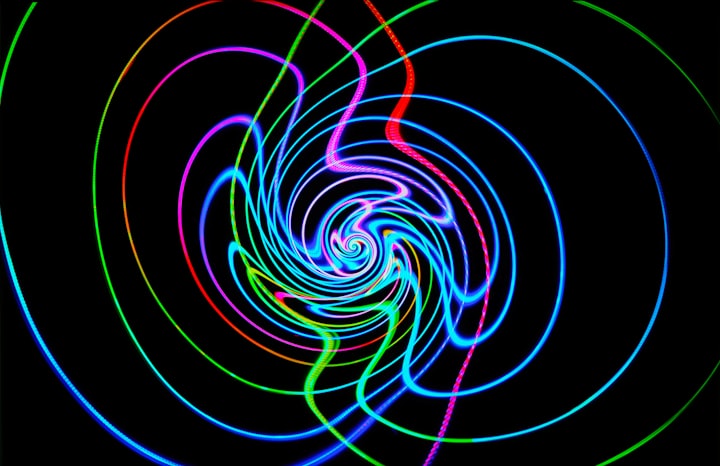Dizziness & Vertigo: A Practical Guide to Treatment & Management
A Quick Guide to Managing Symptoms & Treatment Options.
What You Need to Know About Dizziness
Dizziness and vertigo can be debilitating. Awareness of this affliction has been raised through the years. Very common in the elderly, it is contributing to the high incidence of falls that lead to the downward health spiral for people over the age of 65. As a physical therapist who also specializes in Vestibular Rehabilitation, it is the least I can do to provide helpful education, strategies, and tips on how to deal with it.
When you were a child, you probably made yourself dizzy sometimes just for the fun of it. Now that you’re grown up, you may find that it’s no longer a laughing matter. In fact, dizziness is one of the most common and complicated medical complaints. The topic itself can complete a whole series of books. However, I will make this short and painless just to raise awareness and guide you to your options.
Learn how to distinguish between the main varieties of dizziness, and find out what you can do to stay steady on your feet. This quick guide will show you what you need to know.
Facts about Dizziness
Dizziness can occur when you’re recovering from the flu or it can strike out of nowhere. It can be a result of disruptions in the inner ear, mainly, the otolith or "crystals" found in the inner ear canals. It can be a result of diseases that affect the brain. (strokes, etc.). It can be from the many medications that you take. It can be a result of grave diseases involving the neuromuscular system. It may be caused by a concussion as well. Whatever the cause, being informed can help you restore your balance.
1. Not all dizziness and vertigo symptoms are the same. Vertigo is the most common form of dizziness, and it’s not what you see in the movies. It’s the feeling that you or your surroundings are moving even when they’re standing still. Dizziness can also be related to fainting, trouble walking, or psychological conditions including depression and anxiety.
2. Seek immediate medical care. Most cases of dizziness are not serious. Urgent care is needed for additional symptoms that could be signs of a heart condition or stroke. That includes chest pain, trouble breathing, double vision, and slurred speech.
3. Aging can induce dizzy symptoms. Our nervous system deteriorates as we age. Dizziness is more common among seniors, and it’s more likely to interfere with daily activities. Your doctor can usually customize a treatment plan that will help you remain mobile.
Short-Term Protection from Dizziness
The first thing you want to do when you’re feeling light-headed is to avoid falling down or becoming involved in a car accident. Prompt action will reduce your risk of injury.
1. When dizzy, Stop what you’re doing. If possible, lie down and keep your head still. Keep your head elevated or propped up with pillows. Close your eyes and do deep breaths. Sip water and avoid solid foods if you’re also experiencing nausea and vomiting. Try some smelling salts, or essential oils with menthol or peppermint scent. I have tried tea tree and citrus scents and it does help. You can also try hard chewing candy with menthol. Lifesavers, peppermint, even breath mints can work to ease that nauseated feeling.
2. Move slowly. When you’re ready, stand up gradually and avoid sudden movements. Head motions, especially looking up or down can trigger symptoms. Dizziness often involves conflicting signals to your brain so move your eyes first, then your head, limbs, and torso. Take care with activities like driving, and wear sensible shoes.
3. Easy on that coffee and other caffeinated products. Caffeine can pack a double whammy because it reduces circulation to your balance center in the inner ear and aggravates anxiety. Limit your consumption of coffee, cola, and chocolate.
Longer-Term Solutions for Dizziness
It is imperative to address the underlying causes of your dizziness. Proper treatment can provide lasting relief.
1. See a specialist. In the current health insurance environment, you will have to first consult with your primary physician. Based on his findings, he may refer you to an E.E.N.T. (An Eyes, Ears, Nose & Throat specialist). For this type of specialist who specializes in vertigo and dizziness, they may have an Audiologist in their practice. Audiologists are health care professionals who identify, assess, and manage disorders of hearing, balance, and other neural systems.- From John Hopkins Medicine
Describing your symptoms accurately will help your doctor or specialist to diagnose your condition. You will get asked about the type of dizziness you experience: is it a "swirly", spinning" sensation, or a wavy kind, like being on a boat on a rough sea. Because dizziness affects so many different parts of your body, you may be referred to a specialist. Your doctor may also prescribe motion sickness drugs temporarily to make you more comfortable. The most common is Antivert and Meclizine. I have heard of patients who have tried Dramamine (most commonly used for seasickness) seemed to ease some symptoms temporarily.
2. Consult a Physical Therapist. Many physical therapists specialize in Vestibular Rehabilitation. Vestibular rehabilitation therapy involves simple vestibular exercises that include movements of the eyes, head, and body that can often make your dizziness disappear in a few minutes. Canalith repositioning maneuvers (aimed at repositioning "crystals" in the inner ear) may be performed. An example of these maneuvers is Epley's Maneuver and Brandt-Daroff.
Your physical therapist will perform a thorough evaluation to assess your specific condition. They can give you specific instructions for your individual condition. This can include strategies on how to lessen the impact of dizziness in your activities of daily living. Your balance will also be addressed, as well as activities to improve your reflexes in the event of falling or losing balance during dizzy triggers.
To learn more about Vertigo & Dizziness, check out VEDA, (The Vestibular Disorders Association) online, as they have comprehensive resources and information that you can access and learn about. You can avail of free brochures, pamphlets, and infographics to guide you on your journey to wellness. They also feature a list of Vestibular Rehab Practitioners, mostly physical therapists in different areas. There might be one, right in your area.
3. Work on your coordination. Any activity that enhances balance and eye-hand-body coordination will help fight dizziness.
BONUS: ***Simple Exercises to Improve Your Balance, Coordination & Reflexes:
***BALL THROWING, CATCHING, BOUNCING. Sounds simple enough, right? The simple exercise of this seemingly mundane child's play, can enhance your response time and alertness to sudden shifts in balance.
***HEEL AND TOE RAISE WITH YOUR EYES CLOSED. Holding on to a kitchen counter for support, raise your heels with eyes closed, and hold it for 10 seconds. You will feel very unsteady. This, however, helps you to force your brain not to rely on your eyes for balance. This also helps you walk steadier, especially if you get those dizzy attacks.
***BED ROLLING. This exercise helps you build a resistance to the effects of dizziness, during head movements. Slowly lay on your back, with a pillow if laying flat makes you dizzy. Roll over to your LEFT side. If you get dizzy, do deep breaths and wait for the symptom to subside. Once dizziness passes, roll over to your RIGHT side. Again, when you get dizzy, wait until you have none. Repeat a few times until your brain and inner ear adapt to the rolling motions. You may have to practice this a few times until you do not get those intense dizzy triggers.
***SIMPLE EYE EXERCISES. Specialized eye exercises (Vestibulo-ocular exercises) are being utilized by Vestibular Therapists to help patients manage dizziness and vertigo.
(You can search information online for Cawthorne-Cooksey Habituation Exercises)
I will share a very simple one that you can start with. Hold a pen with one hand and place it in front of you at eye level. The goal is to follow the movement of the pen with your eyes, in different directions. These are the directions with which you move the pen in your hand.
Up and Down, Side to Side, and in Diagonal Directions for about 10 repetitions each time. (Check online for images of more Eye Exercises for Vertigo). Consulting with a physical therapist does make sure that you are prescribed the appropriate exercises for your specific condition. As with ANY exercise, always consult with your doctor or specialist before starting any exercise program.
Above is a video and information about the Tai-Chi based Exercise Program I developed for improving Balance and Fall Prevention at my clinics in the past. Tai Chi and yoga have been recommended to help ease your symptoms, improve your balance that helps prevent falls.
4. Seek counseling In some cases, dizziness may be a sign of depression and anxiety that can be helped with counseling and medication. Relaxation practices such as meditation and deep breathing can also be effective.
5. Consider surgery. Surgery for dizziness is rarer today because less invasive treatments are more widely available. However, surgery may still be recommended for chronic disorders such as Meniere’s disease.
Dizziness is usually a harmless and temporary condition. At its worst, it can be debilitating and can take out the enjoyment of life. A little knowledge however, can help you avoid falls, seek professional help and rule out more serious causes.
Hope this enlightens you or a loved one on how to manage dizziness and vertigo.
About the Creator
LOVENA SUSON
Lovena is a physical therapist, freelance writer and a blogger; has authored self-help books on Kindle and Audible. Writing is a passion, so is fixing broken bodies. Her projects include medical missions and fall prevention in the elderly.







Comments
There are no comments for this story
Be the first to respond and start the conversation.